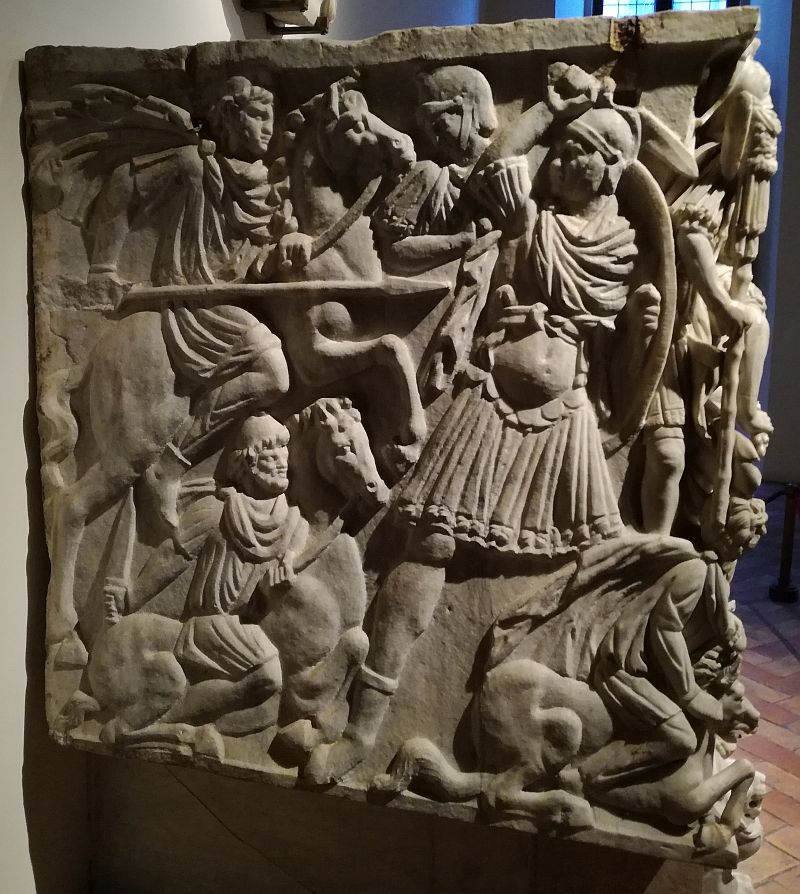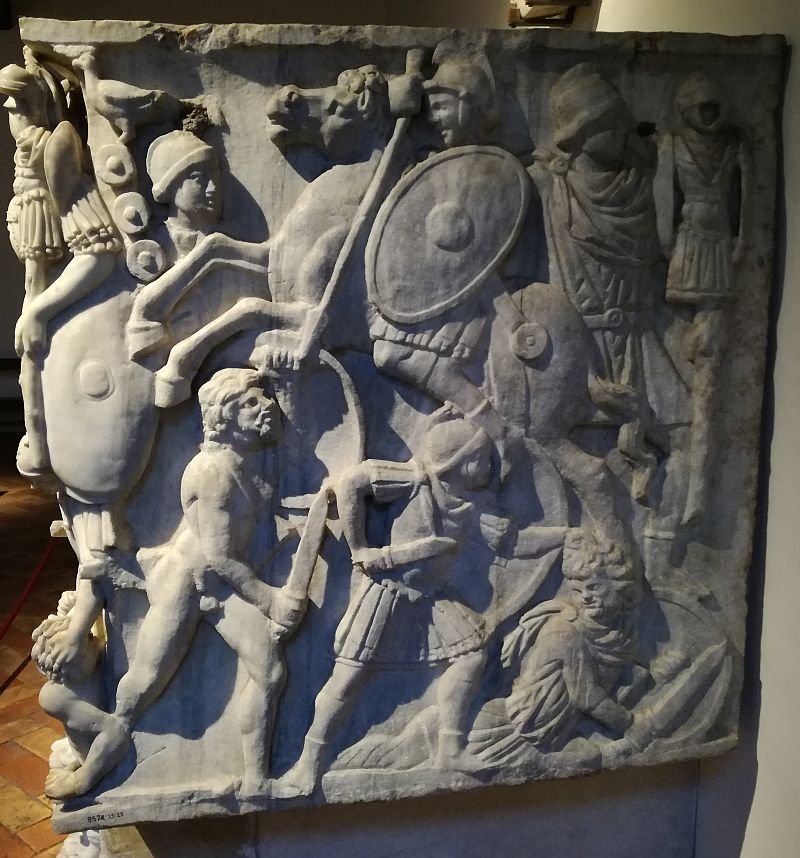The so-called Ludovisi’s great sarcophagus was discovered in 1621 in a tomb on Via Tiburtina and found its way into the collections of the famous collector of ancient art – Cardinal Ludovico Ludovisi, nephew of Pope Gregory XV.
The sarcophagus, 2.73 m by 1.53 m, was made of marble. Its entire front and two shorter sides are decorated with a relief covering the entire surface of the battle between the Romans and the barbarians. The Romans clearly triumph in the clash, foot and horse soldiers are in the upper strip of the relief, while the crushed barbarians occupy the lower part, trampled with horse hooves and massacred with swords. The central place of the composition is occupied by a young Roman leader leading the cavalry charge, triumphant, without armour and sword, clearly disregarding the danger. The figures were made with incredible attention to detail and skillfully using chiaroscuro. The scene seems chaotic at first, but upon closer inspection, it turns out to be surprisingly legible. It is undoubtedly the finest example of Roman funeral art. Originally, the sarcophagus cover had an inscription, now blurred, which makes it impossible to identify the deceased for whom this work of art was made. The period when the sarcophagus was built is usually located in the 2nd half of the 3rd century.
Many researchers believe that the sarcophagus was made for one of the sons of Emperor Decius (Gaius Messius Quintus Decius Augustus) – Herenius Decius (Quintus Herennius Etruscus Messius Decius) or Hostilian (Gaius Valens Hostilianus Messius Quintus), previously elevated to the dignity of Augustus.
Herenius Decius died in 251 with his father in the battle with the Goths at Abrittus (also known as the Battle of the Forum of Terebronia), and Hostilian died in Rome of the plague in the same year. Janus Ostrowski in an article from 1982 entitled “Battle scene on a sarcophagus from the collection of the National Museum in Krakow” points to Hostilian, but it seems to be the author’s mistake, as he further states that this and his father, Emperor Decius, died in the battle with the Goths, and as we know, his older brother Herenius was killed in the battle with the Goths. How can we assume the body of the deceased Augustus has been found because history has stored information for posterity that the body of Emperor Decius was not found after the battle, which would suggest finding the body of his son. It is possible, therefore, that it was sent back to Rome and placed in a tomb in Via Tiburtina. It is intriguing that the sculptor carved an X on the chief’s forehead, which means that he was a follower of Mithra.
The sarcophagus itself is now one of the most important elements of one of the largest collections of ancient works of art – the collection of the Roman Museo Nazionale Romano, and can be admired in the Palazzo Attempt. The cover is on display at the Bologna museum.
- Great sarcophagus of Ludovisi
- Great sarcophagus of Ludovisi









